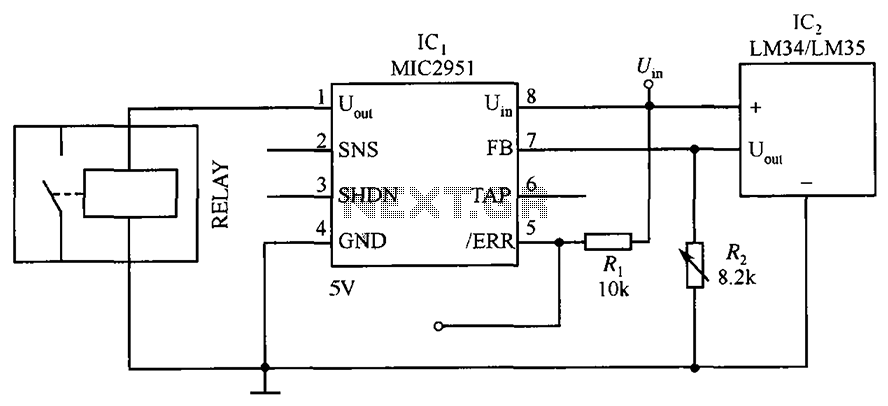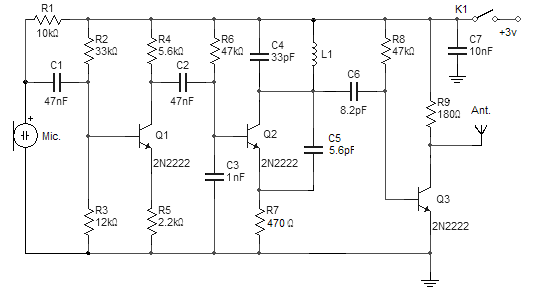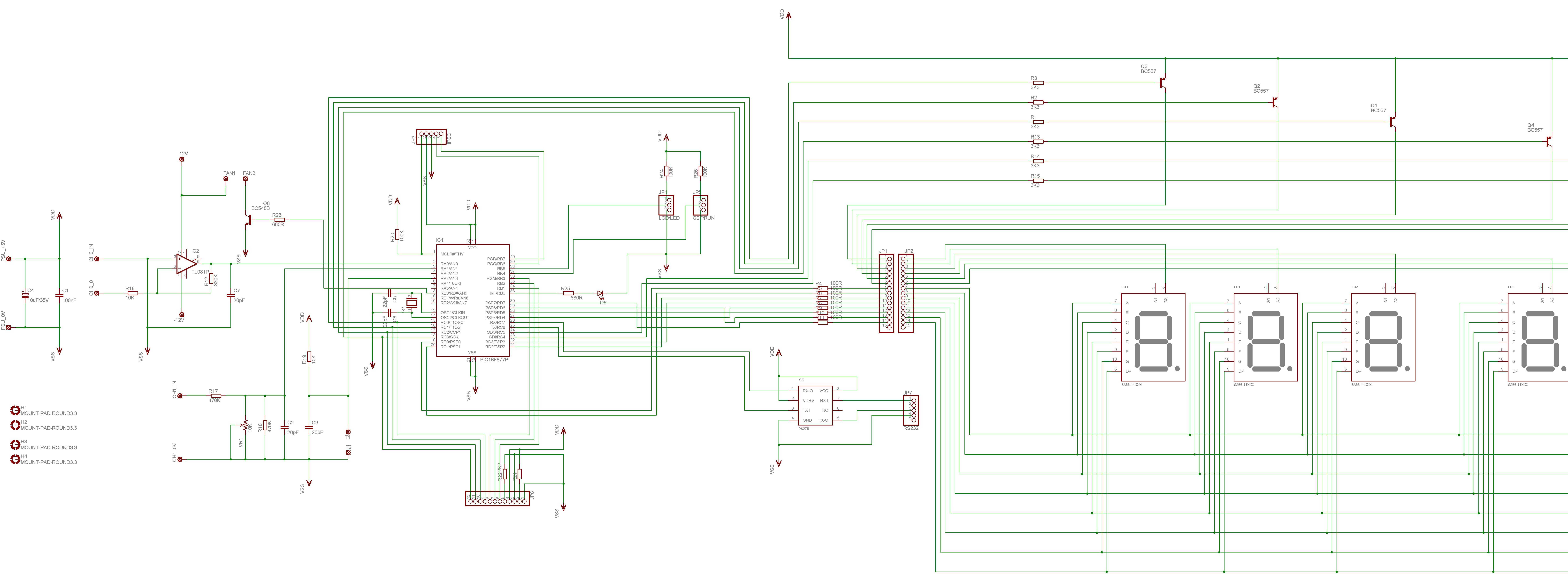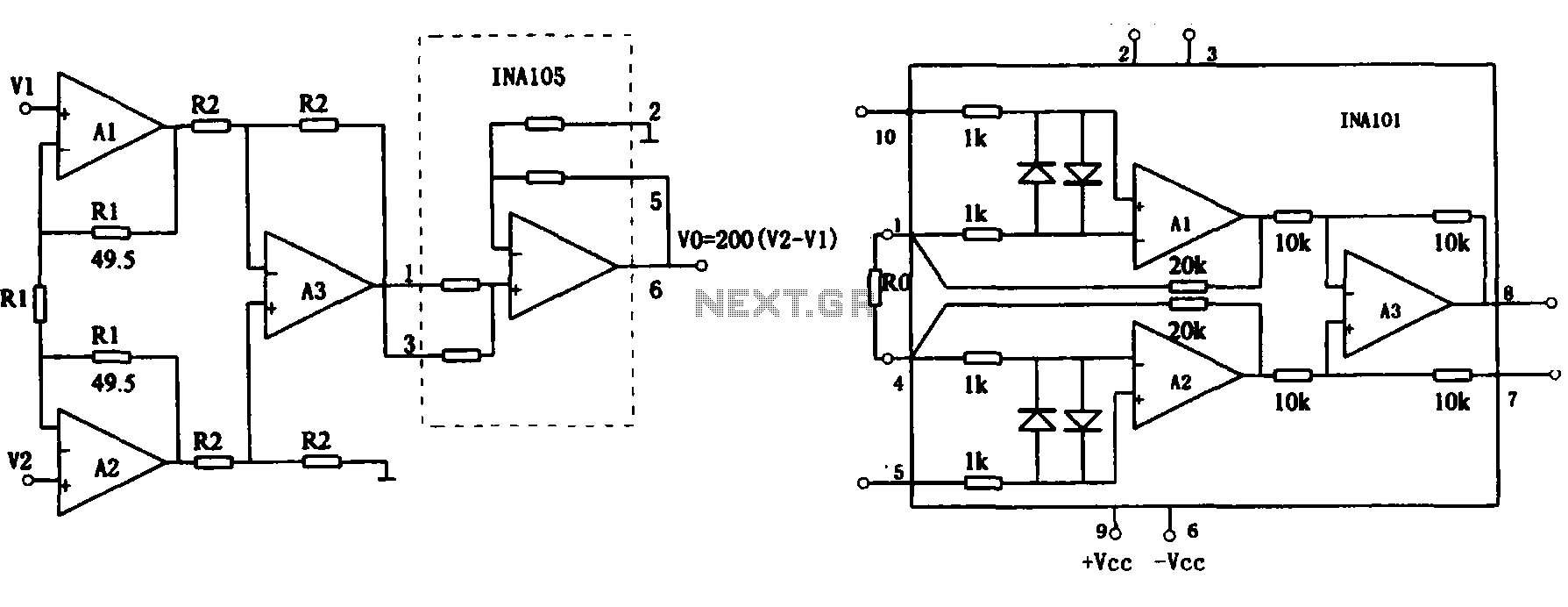
Micro ampere meter circuit using uA 741

The micro ampere meter presented here functions as a DC millivolt meter. It achieves full-scale deflection with a 0.1V input. The current to be measured flows through a known resistance R, and the voltage drop across this resistance is measured. In this configuration, the IC 741 operational amplifier is utilized as a non-inverting amplifier.
The micro ampere meter circuit employs the 741 operational amplifier, which is known for its versatility and stability in low-voltage applications. The circuit is designed to amplify the small voltage drop generated across the known resistor R when a microampere level current flows through it. The choice of a non-inverting amplifier configuration ensures that the output voltage is in phase with the input voltage, providing a straightforward and linear relationship between the input current and the output voltage.
The circuit's operation begins with the input current flowing through the resistor R, creating a voltage drop (V_R) according to Ohm's Law (V = I * R). This voltage drop is then fed into the non-inverting terminal of the op-amp. The op-amp amplifies this voltage drop, and the gain can be adjusted by selecting appropriate feedback and input resistors, providing flexibility in scaling the output to match the desired full-scale deflection of the meter.
The output of the op-amp drives a display mechanism, which could be an analog meter or a digital readout, depending on the design requirements. The calibration of the meter is crucial; it must be performed by adjusting the known resistance R or the feedback components of the op-amp to ensure accurate readings across the expected range of input currents.
Overall, this micro ampere meter circuit is an effective tool for measuring very low currents with precision, leveraging the amplification capabilities of the 741 op-amp to provide clear and readable output indicative of the input current levels.The micro ampere meter shown here is basically a DC millivolt meter. The circuit gives full scale deflection for 0. 1V input. The current to be measured is passed through a known resistance R and the voltage drop across it is measured. Here the IC 1 uA 741 op-amp is wired as a non inverting amplifier. 🔗 External reference
The micro ampere meter circuit employs the 741 operational amplifier, which is known for its versatility and stability in low-voltage applications. The circuit is designed to amplify the small voltage drop generated across the known resistor R when a microampere level current flows through it. The choice of a non-inverting amplifier configuration ensures that the output voltage is in phase with the input voltage, providing a straightforward and linear relationship between the input current and the output voltage.
The circuit's operation begins with the input current flowing through the resistor R, creating a voltage drop (V_R) according to Ohm's Law (V = I * R). This voltage drop is then fed into the non-inverting terminal of the op-amp. The op-amp amplifies this voltage drop, and the gain can be adjusted by selecting appropriate feedback and input resistors, providing flexibility in scaling the output to match the desired full-scale deflection of the meter.
The output of the op-amp drives a display mechanism, which could be an analog meter or a digital readout, depending on the design requirements. The calibration of the meter is crucial; it must be performed by adjusting the known resistance R or the feedback components of the op-amp to ensure accurate readings across the expected range of input currents.
Overall, this micro ampere meter circuit is an effective tool for measuring very low currents with precision, leveraging the amplification capabilities of the 741 op-amp to provide clear and readable output indicative of the input current levels.The micro ampere meter shown here is basically a DC millivolt meter. The circuit gives full scale deflection for 0. 1V input. The current to be measured is passed through a known resistance R and the voltage drop across it is measured. Here the IC 1 uA 741 op-amp is wired as a non inverting amplifier. 🔗 External reference





